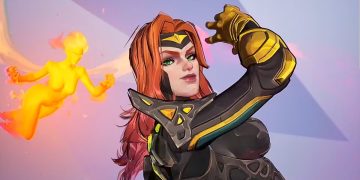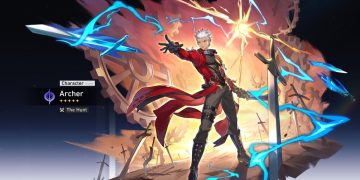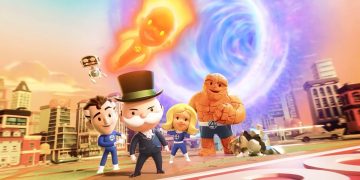If you’ve been a fan of the PlayStation Podcast over the years, you surely remember Shuhei Yoshida. He made quite a name for himself as the President of PlayStation Studios during the PS3 and PS4 eras. These days, he’s been passionately championing indie developers as the Head of the Indies Initiative at PlayStation.
As we gear up to celebrate PlayStation’s 30th anniversary next week, I had the pleasure of sitting down with Yoshida-san. We reflected on his impressive career, talked about what lies ahead for him, and even delved into his favorite PlayStation games spanning three decades. Here are some highlights from our chat.
Note: The interview has been edited for clarity and brevity. Check out the full conversation here (Apple, Spotify, direct DL).
SID: You were among our first guests on the PlayStation Podcast, probably a good 14 years back. It’s been ages… What have you been up to?
SHU: Travel has kept me busy! I’ve been jet-setting to Brazil, India, Australia, Sweden—checking out game events, meeting developers, and sharing games I love on Twitter throughout the year.
SID: Thrilled to catch up with you. I heard you have some news to share today?
SHU: Absolutely, I do. I’m announcing my departure from Sony Interactive Entertainment on January 15, 2025. It’s sort of like announcing a game’s launch date—a thrill I haven’t felt for quite some time [laughs].
SID: You’ve dedicated so many years to Sony Interactive. What prompted this decision and its timing?
SHU: I’ve been part of PlayStation since its inception, marking my 31st year with them. When I reached the 30-year milestone, I started pondering if it was time for a new chapter. The company is thriving; I adore the PS5 and the amazing games it’s bringing. Plus, there are new leaders who I greatly respect and admire. The future of PlayStation looks incredibly promising.
So, knowing PlayStation’s future is bright, I felt it was the right moment for me to step back.
SID: That’s understandable. Let’s take a stroll down memory lane. How long have you been with PlayStation exactly?
SHU: I joined Ken Kutaragi’s team back in February 1993 when the original PlayStation was still under development. At the time, the team consisted solely of engineers, and I was the first non-engineer. Sony was gearing up to bring PlayStation to market, and here we are, 31 years later.
SID: Ken Kutaragi is often hailed as the “father of PlayStation.” What was it like in those early days before the first PlayStation made its debut?
SHU: When I joined, PlayStation was still just a department within Sony. Ken’s team was working on development, while another team under Sony Music Entertainment Japan was creating games for the Super Nintendo. In November 1993, these teams merged to form Sony Computer Entertainment.
At the company’s formation event, everyone fit into a single hotel room for the party [laughs]. We numbered around 80 people—quite a small group.
SID: Such a small team, but it must have felt exhilarating!
SHU: Oh, it definitely was! We were all buzzing with excitement about the revolutionary 3D graphics, real-time tech, and CD-ROM capabilities Ken’s team was developing. We had sky-high hopes and ambitions.
Though we were not initially recognized in the gaming industry, given other electronics giants had failed to break through, we weren’t taken too seriously initially. But look where we are now.
SID: It’s amusing how things evolve over time. Looking back, what was your first role with PlayStation?
SHU: My first task with Ken’s team was to engage publishers and developers across Japan. As an account management lead, I called numerous companies, setting up meetings from Hokkaido to Kyushu. I traveled with executives, including Ken Kutaragi, to introduce publishers to PlayStation and encourage them to create games for it.
It was a fun yet challenging time because there weren’t many believers in 3D graphics back then.
For more of Shuhei Yoshida’s insights into PlayStation’s earliest days, listen to our full discussion on the PlayStation Podcast.
…
SID: You eventually became the president of PlayStation Studios. During that tenure, which memory stands out most vividly for you?
SHU: My time there was filled with incredible games and talented teams—I was lucky to witness our games receive Game of the Year nominations frequently. Being involved with even one such game is a privilege, but it felt like a yearly occurrence for me.
A standout moment for me was when Journey won Game of the Year. It was a digital-only, three-hour-long game on the PlayStation Network. Going up against AAA titles, it was groundbreaking for the industry.
During the summit, its creator Jenova Chen shared a story about a letter from a girl who lost her father. She found solace and was able to move forward in life after playing Journey. The audience was moved—a testament to the game’s profound emotional impact.
…
SID: How did you transition into your role as Head of the Indies Initiative at Sony Interactive?
SHU: I’ve always been passionate about indie games. The early 2000s saw the indie game boom, thanks to digital distribution on PC, mobile, and consoles. It opened up vast possibilities for anyone globally to create and sell games, inspiring unprecedented creativity in the industry.
Indie titles, being smaller in scale, aren’t burdened by hefty investment demands. They allow for experimentation with novel concepts, fostering a new creative dimension. It felt like I was on a treasure hunt whenever I explored indie sections at events like E3 or Gamescom.
While managing PlayStation Studios and overseeing AAA projects was rewarding, discovering and promoting indie gems was a personal passion of mine. Landing a role focused entirely on supporting indie developers feels like my dream job materialized.
…
Lastly, here’s an image of Shu depicted as a playable character in “Super Time Force Ultra” by Capybara Games.
[End of article]













































